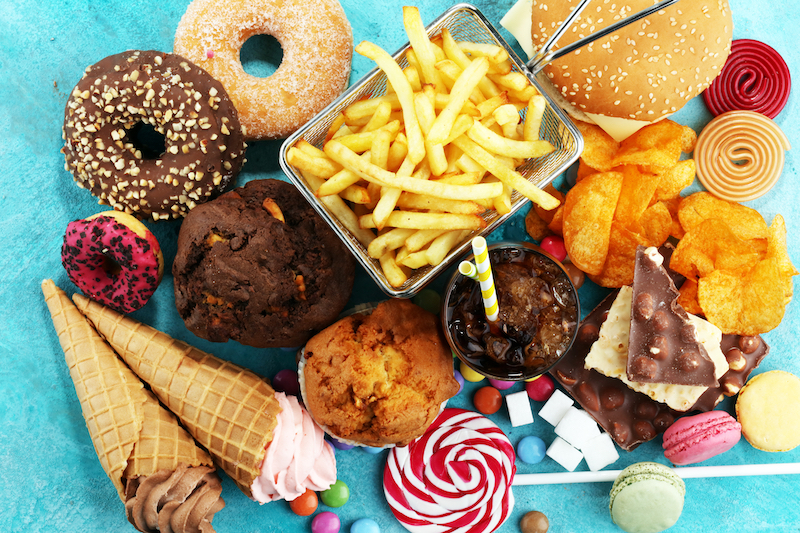

Last Updated on January 6, 2022 by Thinkster
Any parent will probably tell you that picky eating is one of the hallmarks of childhood. If there’s one thing kids love more than chowing down on a delicious sugar cookie, it’s poking, pecking, and gawking at all the healthy fruits and veggies stacked on their plates.
Unfortunately, this overwhelming aversion to all things healthy is just a part of what it means to be a kid.
And for many mothers and fathers, getting their rugrats to even sit at the table for more than five minutes is part of a daily battle—one that rages on for years and years and years.
It’s a struggle we all can identify with, even if we don’t have kids of our own.
And because of mass advertising, the fast-paced nature of daily life, and the sheer convenience and accessibility of family-fun meals, this war against poor nutrition isn’t getting any easier.
But healthy eating and hydration both play a critical role in everyone’s wellbeing. It’s especially important for children because they’re constantly growing from birth to the end of adolescence.
And as your child grows, they will develop eating habits that follow them throughout their entire life.
We get it, though: convincing your toddler or preschooler to eat right can be a frustrating challenge.
With all the whining, begging, pleading, and downright refusal to try healthier foods, it can be tempting to skip preparing well-rounded meals and just swing by the drive-through for a couple cheeseburgers and a few orders of extra-large french fries.
Sound familiar?
Yeah, we know. Because, in today’s climate, forfeiting leafy greens in favor of greasy fast food is all-too-common. And, if we’re being completely honest, we can totally see why.
It’s quick.
It’s simple.
And it’s stress-free.
But as this mindset becomes more and more universal, the impact is pretty dramatic:
All this means is that helping your youngsters understand the role vitamins, minerals, fats, and sugars play in their wellness journey—today—is absolutely essential.
So, what do you do? How do you overcome these challenges and ensure your children are getting the nutrition they need?
Luckily, we’ve got some ideas.

As you’re starting to realize the importance of establishing healthy eating and hydration habits at a young age, you might find yourself scouring all four corners of the internet, looking for an idea as to what these habits actually look like.
That’s okay.
When it comes to health, wellness, and nutrition, there’s a lot of noise out there.
One source will tell you true health is all about calories in/calories out.
Another will tell you the latest fad diet (Atkins, south beach, paleo, etc.) is the only way to maintain a healthy weight and body mass index (BMI).
Others will tout the mind-blowing benefits of cleanses and lengthy detoxes.
But here’s the truth, friends. While all the above-mentioned trends certainly have their benefits, healthy eating habits have absolutely nothing to do with our actual diet—and everything to do with our relationship to food.
It isn’t about the foods we eat; it’s about how and why.
Basically, there’s very good evidence that diets established in childhood and adolescence persist through life, so if your kids have a healthy attitude towards food and eating, it’s more likely to follow them well into adulthood.
And that means they won’t overindulge, gorging themselves on ice cream, pizza, and other notoriously unhealthy foods.
But they won’t completely deprive themselves of all those delicious pleasures either.

So, how do we define healthy relationships with food? The answer consists of a few different factors, some of which are about eating behaviors, and some have to do with our attitudes.
In general, folks with a healthy relationship with food and eating have the following philosophies:
The bottom line: positive eating experiences result in more sustainable nutritional habits. And for your kids, it’s an invaluable lesson.
Poor nutrition is usually a result of eating too much of the wrong foods (those that are low in vitamins or high in fat) while depriving the body of the nutrients it needs most.
Overeating, too.
Yes, it’s true when they say you can have too much of a good thing.
According to a National Health and Nutrition Examination Survey from 1999 until 2016, more than half of kids (56%) ate meals of low nutritional value that contained too much salt, too many processed foods, and not enough vegetables.
The study, published by ??the Journal of the American Medical Association (JAMA), illustrates the direct correlation between poor nutrition and our natural inclination to make healthier food choices based on past experiences with food.
Here’s a brief breakdown of some of the key discoveries:
What’s worse than these statistics?
The potential for long-term health consequences. Not to mention the associated healthcare costs.
Because, while this report provides a thorough analysis of how dietary trends change over time, it also reminds us all that poor eating habits put children at higher risk for obesity and diabetes, and increase certain risk factors for stroke, heart disease, and cancer.
And that’s just the beginning.
Other potential issues inadequate nutrition can cause include delayed puberty, nutrient deficiencies and dehydration, menstrual irregularities, poor bone health, increased risk of injuries, poor academic performance, and increased risk of eating disorders.

According to the Centers for Disease Control and Prevention, an estimated 38.2 million children under the age of 5 years were overweight or obese in 2019. Overweight and obese children are at greater risk for major health issues such as Type 2 diabetes, high blood pressure, joint pain, and high cholesterol.
?Diabetes is a chronic medical condition that, due to a lack of insulin, causes problems with the body’s ability to turn food into fuel for the body. If children are overfed, gaining an unhealthy amount of weight, it can boost the risk of Type 2 diabetes. Increased thirst, frequent urination, fatigue, blurred vision, and sudden weight loss are all symptoms that should be addressed immediately.
We don’t usually talk about high blood pressure (HBP or hypertension) until we grow older, but children of all ages can have high blood pressure. And just like high blood pressure in adults, the exact cause is rarely determined in any definitive way, but early diagnosis and treatment are key.
Cardiovascular disease is no joke. And while some risk factors are out of your control—like family history—poor nutrition, lack of exercise, and excessive sodium intake (salty foods lead to water retention and an increase in blood circulating throughout the body) are the usual suspects. By starting heart-healthy habits right now, you can help your kids drastically reduce their risk of ever having to worry about cardiovascular disease.
If your kid struggles to get the nutrients they need, it shouldn’t go unnoticed. There’s a handful of specific signs that will give you a clue as to whether or not you need to switch things up to get your children on the right track:
And now for the fun part. We’ve outlined the consequences of poor nutrition and emphasized the importance of establishing healthy habits for your kids.
Now let’s talk about strategy.
We understand the challenge you’re up against here—there’s almost no will stronger than that of a defiant toddler. So let’s talk about what you can do to make healthy eating habits something your kids will enjoy.
Children often mimic their parents’ behavior. And they’re far more observant than we ever give them credit for. If you’re constantly snacking, dieting, or skipping meals altogether, your children will grow up thinking that this sort of behavior is normal. Make hydration part of your daily routine and be aware of what sort of messages you might be sending to your kids when it comes to food. As time goes by, you’ll find they love following your lead.
Generally, children need to eat every three to four hours: three meals, two snacks, and lots of fluids. But kids don’t necessarily understand how mealtimes work, so there’s a good chance they’ll be raiding the pantry throughout the day for chips, cookies, and other delicious treats. But they need structure. Schedule each meal and snack, so they know what to expect and when. This will hopefully scale back their desire to eat when they should be building pillow forts or practicing their numbers and letters.
Life can be hectic. You’re juggling work, fitness, family, and a whole slew of other obligations. So maybe mapping out an entire menu for the month just isn’t in the cards. So start small. Make one meal for the whole family at least once per week. It doesn’t have to be fancy, but it should be balanced: divide each dish into equal parts lean protein, complex carbohydrates, and fibrous veggies. A variety of options never hurt either—and they empower children to make their own choices at the table.

Most of us—regardless of age—are all about fun. We typically don’t want to engage in any activity that doesn’t bring us some level of joy. Breakfast, lunch, and dinner are experiences that should be enjoyed, particularly for kids. If they’re fighting you throughout every meal, there’s a good chance they find that time to be physically and emotionally exhausting, so you want to put some effort into making these moments something you all look forward to. Get creative, get messy, and get everyone involved. And always recognize and acknowledge good behavior.
This is where all that talk about having a healthy relationship with food comes into play. And your response to your child’s eating habits will play a massive role in whether or not they’ll stick. As hard as this may be, try not to use negative reinforcement or comment on how much (or how little) your kids are eating. You can’t force this, so patience and positivity are crucial. Remember, your job is to serve balanced meals, while your kids are responsible for eating them.
Remind yourself that, above all else, balance and longevity are the most important part of healthy eating habits. It’s not about deprivation or overindulgence. In other words, bouncing from one extreme end of the spectrum to the other is a shortcut to frustration and failure. As long as you balance pleasurable food, like ice cream or pizza, with smart food choices and physical activity, your children will develop healthy habits that last a lifetime.


